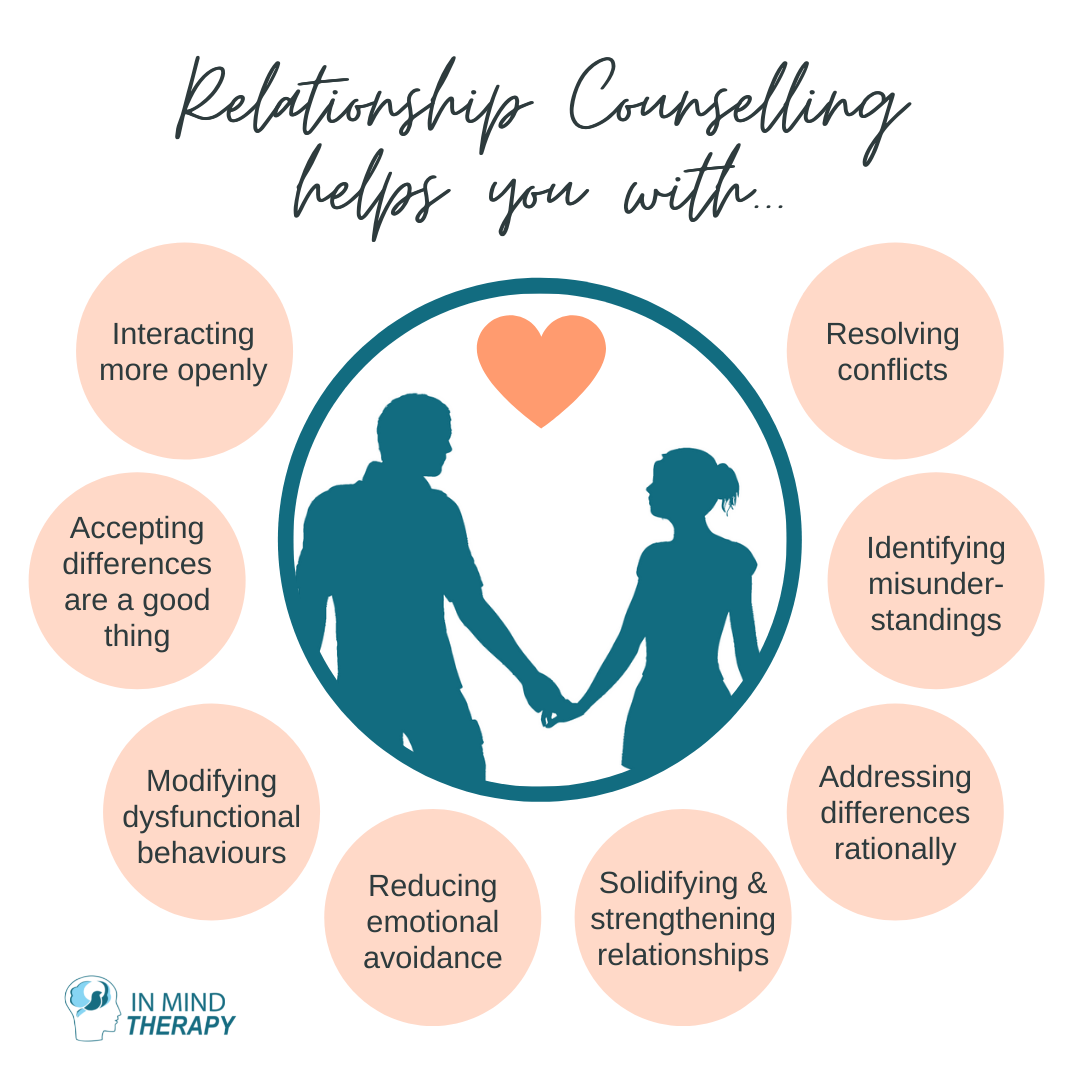The Greatest Guide To Aim Point Counseling
The Greatest Guide To Aim Point Counseling
Blog Article
Aim Point Counseling Fundamentals Explained
Table of ContentsThe 3-Minute Rule for Aim Point CounselingA Biased View of Aim Point CounselingAbout Aim Point CounselingWhat Does Aim Point Counseling Mean?Some Ideas on Aim Point Counseling You Should KnowFacts About Aim Point Counseling Revealed
The longitudinal style includes a pre-treatment study and 2 follow-up studies at 3- and 12-months post-intervention. The research study is embeded in 8 Relationships Australia Victoria centres, across municipal, outer suburban areas, and regional/rural sites. Relationships Australia, a non-government organisation, is the biggest copyright of pair counselling and connection services in Australia.
In Australia, the typical length of marriage prior to splitting up is 8.8 years, and approximately half of all separations involve pairs with kids [1] These high prices of connection breakdown have actually been continually related to adverse health consequences for both grownups and youngsters following divorce/separation. These consist of seclusion from support networks, and minimized earnings and criterion of living for both adults and kids [3], dilemmas of loyalty over kids for males, and depression and loss of identity for women [4,5]
A Biased View of Aim Point Counseling
The results of divorce and separation can be detrimental, research study shows that high relationship dissonance in undamaged pairs is also likely to have adverse end results.
Furthermore, elements that affect the outcomes of these solutions need complete investigation. Study to date has identified both couple and individual factors that may add to partnership disharmony. These include relationship fulfillment and dedication at the pair degree, and depression at the specific level. However, robust research study to examine relationship-enhancing treatments in the area are scarce.
How Aim Point Counseling can Save You Time, Stress, and Money.
As a result, while many research studies suggest renovations in partnership contentment adhering to pair coaching, they are limited by the samples and measures utilized, greatly short-term follow-up period, and evaluations that do not account for the dyadic nature of couple information. Connection dedication, based on steps such as the Commitment Inventory (CI) [19], is one more commonly investigated partnership result.
To sum up, study indicates that couple-specific variables in addition to individual elements may predict the results of couple counselling and connection services. The causal direction of these relationships, however, is much less clear. These monitorings are essential, since, to justify and direct the application of relationship services such as pair therapy, empirical proof needs to explore both the end results of connection solutions and the elements that predict successful treatment.
Therefore, there is a growing agreement that efficiency studies ought to be enhanced by effectiveness research to best inform clinical practice [ 29] The limited effectiveness research that exists to day recommends that couple therapy can boost end results such as partnership contentment [33,43], interaction abilities and basic health [44], at the very least in some European nations.

We currently understand little concerning the profiles of pairs that seek connection education and learning contrasted with those that look for connection coaching, or the outcomes of these programs. Anecdotal evidence suggests that there may be considerable distress among at the very least some couples seeking relationship education. Connection education and learning programs differ from pair therapy as they are normally extremely structured, performed in teams, and concentrate on a mixture of four components; awareness, feedback, cognitive modification, and skills training [45]
The 3-Minute Rule for Aim Point Counseling
Feedback entails individuals finishing surveys regarding their connection (e.g. procedures of interpersonal problems), and receiving details on what their scores indicate. Cognitive-behavioural strategies promote altering cognitions to help with positive connections.
These meta-analyses highlight limitations in the existing literary works on partnership education and learning. This example account may not stand for clients that normally present for relationship education and learning.
A Biased View of Aim Point Counseling

Really little study has actually checked out the relative benefits of couple counselling and partnership education programs. As customers are most likely to self-select into these solution types, it is not clear whether particular connection distress accounts present per service type, or certainly whether there is a communication in between providing account, solution type and outcome.
(http://www.askmap.net/location/7289669/usa/aim-point-counseling)
Hence, we have consisted of a 12-month follow-up to assess longer-term trends and effects. The research study utilizes a number of standardized outcome actions because some prior examinations have been criticised for their lack of standardised assessment [50] Lastly, making use of analytical analyses that presume self-reliance of data, such as t-tests, or ANOVAs, has actually been widespread in previous studies [ 44,49]
We recommend to utilise multi-level statistical modelling treatments that manage for the inter-dependence of pair data to analyze any kind of therapy impacts. The details goals of the ECC research are to: 1. Map profiles of customers seeking community agency-based pair therapy vs. relationship enhancement programs in terms of socio-demographic browse this site and relationship indicators (such as relationship fulfillment, partnership dedication, interpersonal problems, and factors for going to), in addition to health and wellness (such as clinical depression, general health and wellbeing) and health service use (eg.
2. Figure out whether couple therapy and relationship education and learning services enhance 3- and twelve-month outcomes for relationship complete satisfaction, commitment, and depression, making use of analytical analyses proper to pair information. 3. Identify the family member payments of client variables (individual and couple) and therapy/education variables to end results at 3- and 12-months, and to sustainability of results in time.
The Definitive Guide to Aim Point Counseling
Multi-level modelling to figure out pre-post differences, managing for dyadic (pair) level. To add to the literature analyzing the efficiency of community-based couple coaching. The results will certainly assist professional decision-making in community-based connection solution settings, and specialist training. 3. To determine the loved one contributions of client/couple and treatment aspects to outcomes at 3- and 12-months, and to sustainability of results with time.
Report this page